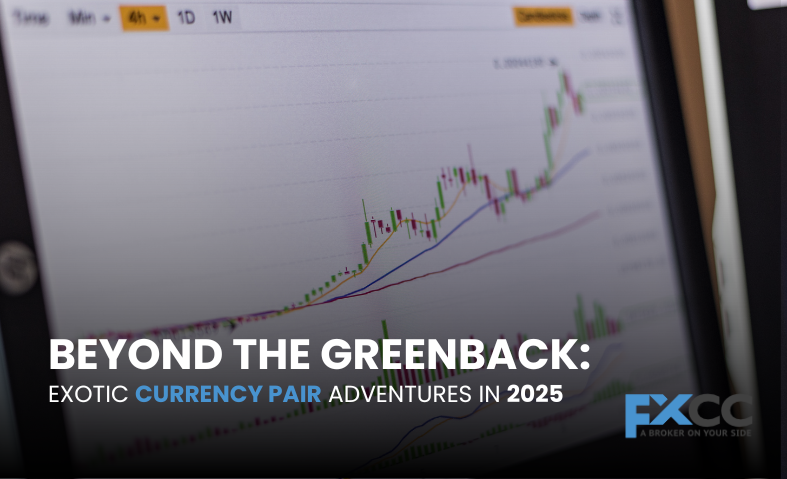The forex market often feels like a well-charted ocean, with the familiar swells of EUR/USD, GBP/USD, and USD/JPY dominating the trading narratives. Yet, for those with a taste for exploration, a captivating archipelago of “exotic” currency pairs awaits. These less-traveled routes connect economies with distinct characteristics, often exhibiting more dramatic price swings and presenting unique prospects for traders who dare to venture beyond the commonplace. As we look towards 2025, a confluence of global realignments and idiosyncratic national developments is poised to make several of these unconventional pairings particularly compelling. Let’s hoist the sails and navigate some of these less-explored corners of the foreign exchange world.

The Tasman Tango: Unpacking AUD/NZD’s Subtleties
While often grouped together due to their Antipodean connection, the Australian and New Zealand dollars are far from identical twins. Their economies, though both resource-rich, possess crucial distinctions. Australia’s deep reliance on mineral exports renders the AUD a barometer of global industrial demand, particularly from China. New Zealand’s strength lies in its agricultural prowess, making the NZD sensitive to global food prices and the health of its dairy sector. Moreover, the Reserve Bank of Australia (RBA) and the Reserve Bank of New Zealand (RBNZ) frequently march to the beat of slightly different monetary drums.
Looking ahead to 2025, the divergence in their approaches to inflation and interest rates will be a key driver for AUD/NZD. For instance, a scenario where Australia’s focus shifts towards stimulating non-mining sectors while New Zealand aggressively combats inflation could create a significant divergence. Furthermore, consider the evolving geopolitical landscape in the Asia-Pacific region and how it might differentially impact these two economies. A shift in trade dynamics or regional security concerns could unexpectedly favor one currency over the other, leading to intriguing movements in this cross-currency pair. Imagine a situation where a new trade agreement significantly benefits Australian mining exports but leaves New Zealand’s agricultural sector untouched – this could fuel AUD strength against the NZD.
Navigating the Nordic Divide: EUR/NOK and EUR/SEK in a Shifting Europe
The relationship between the Euro and the Scandinavian currencies – the Norwegian Krone and the Swedish Krona – offers a fascinating study in contrasts within the European economic sphere. Norway’s wealth, heavily tied to its North Sea oil and gas reserves, makes EUR/NOK a play on global energy markets and geopolitical stability in oil-producing regions. Any disruption in supply or a surge in demand can swiftly impact the Krone’s value relative to the Euro.
Sweden, with its diversified industrial base and technological innovation, sees the SEK more closely linked to broader European economic health and global trade cycles. While both nations are influenced by European Central Bank (ECB) policy, their domestic economic conditions and the independent actions of Norges Bank and the Riksbank can lead to intriguing deviations. In 2025, consider the impact of the green energy transition on Norway’s oil-dependent economy and how Sweden’s technological exports fare in a potentially fragmented global trade environment. For example, advancements in renewable energy technologies could put downward pressure on oil prices, weakening the NOK against the EUR, while strong demand for Swedish tech could bolster the SEK.
The Bosphorus Enigma: Unraveling the Threads of USD/TRY
The Turkish Lira has long been a currency that demands attention, often for its dramatic fluctuations. The USD/TRY pair is a complex interplay of Turkey’s internal economic policies, persistent inflationary pressures, and its delicate geopolitical positioning. The direction of Turkey’s monetary policy in 2025 will be critical. Will there be a sustained shift towards more conventional economic management, potentially offering some respite for the Lira? Or will unorthodox policies continue to fuel volatility? Beyond economics, Turkey’s strategic role in the Eastern Mediterranean, its relationships with NATO allies, and regional conflicts will all cast a shadow on the Lira’s performance against the US dollar. Consider the scenario where a period of political stability and significant foreign direct investment flows into Turkey – this could provide a much-needed boost to the TRY. Conversely, renewed geopolitical tensions or concerns about the rule of law could trigger another wave of Lira depreciation.
Beyond Black Gold: The Nuances of USD/CAD
While the Canadian dollar’s fortunes are often intertwined with oil prices due to Canada’s significant energy exports, the USD/CAD pair offers more intricate dynamics. In 2025, pay close attention to the subtle divergences in economic growth and monetary policy between the United States and Canada. Factors such as Canada’s housing market vulnerabilities, its labor market dynamics, and the Bank of Canada’s response to inflation, independent of the Federal Reserve’s actions, can create trading opportunities. For instance, if Canada experiences stronger-than-anticipated growth in sectors beyond energy, coupled with a more hawkish stance from the BoC to address domestic inflation, the CAD could appreciate against the USD, even if oil prices remain stable.

Emerging Market Intrigue: USD/ZAR
Venturing into emerging markets, the South African Rand (ZAR) offers a compelling case study. The USD/ZAR pair is sensitive to a range of factors, including global risk sentiment, commodity prices (particularly gold and platinum), and South Africa’s domestic political and economic stability. In 2025, keep an eye on South Africa’s progress in implementing structural reforms, its ability to attract foreign investment, and the global appetite for emerging market assets. Any significant positive developments in these areas could lead to ZAR strength. Conversely, political uncertainty or a downturn in global risk appetite could pressure the Rand. Imagine a scenario where South Africa successfully implements reforms that boost investor confidence and lead to an upgrade in its credit rating – this could significantly strengthen the ZAR against the USD.
The forex market’s true richness lies in its diversity. As we navigate the economic currents of 2025, the unusual currency pairs discussed – AUD/NZD, EUR/NOK, EUR/SEK, USD/TRY, USD/CAD (beyond oil), and USD/ZAR – offer a window into unique economic landscapes and geopolitical realities.


